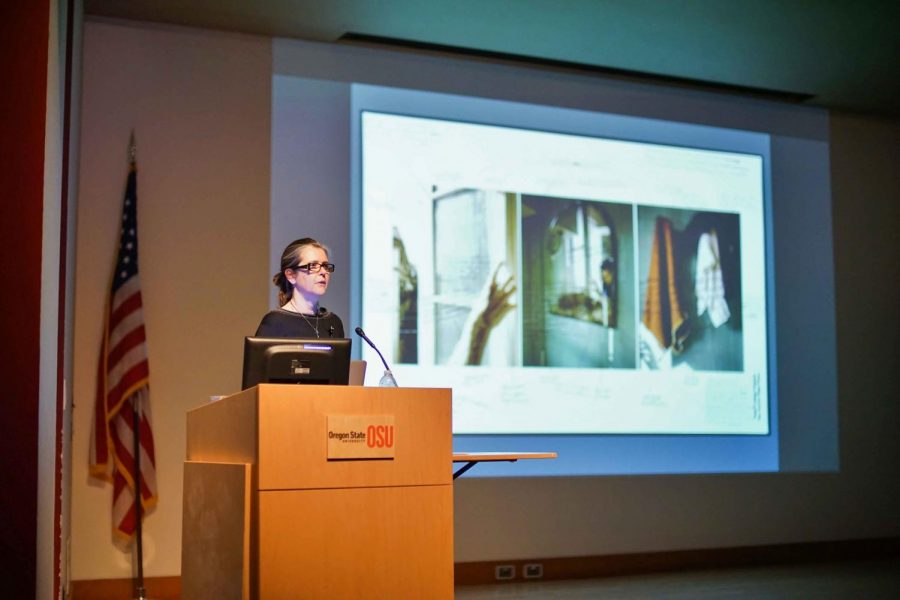Nigel Poor lecture on her work in San Quentin State Prison
February 15, 2016
To get a better understanding of what life was like behind bars, Nigel Poor went into prison herself.
On Feb. 10, Poor spoke at the LaSells Stewart Center about her work inside the San Quentin Prison. In coordination with Prison University Project, Poor taught a photography class where she had inmates view and analyze photographs the come up with responses to them.
“There are a lot of interesting minds, and we shouldn’t forget that,” Poor said.
During one of the projects, “image mapping,” the men were asked to write their thoughts on margins of photographs taken by famous artists. They were then encouraged to keep the image in their cell and leave any traces of their existence on it.
In a second project, “archive mapping,” thousands of 4×5 negative photographic images taken between 1948 to 1985 were uncovered. It was the correction officer’s’ duty to document all events that happened at the prison as evidence.
In her final project, “archive typology,” she categorized the photos into categories such as; blood and evidence, escape and confinement and holidays and ceremonies.
Poor’s projects used image mapping and typology to explain all facets of life in prison and not just the negative stigma that can be perceived by society. Inmates used handwritten text to express their thoughts and reactions to the photographs they were presented.
Michael Nelson, an inmate who has been incarcerated since he was 16 years old wrote a nine page personal essay in response to two photographs. During that time he was placed in solitary confinement, which can be one of the biggest fears the men have according to Poor. She found Nelson’s essay to be so compelling that she shared it with American photographer Richard Misrach. Misrach presented the essay to an audience of 2,500 at an artist showcase. Nelson’s essay has since been published.
“This shows the power of photography to transport you out of your situation and allow you to think creatively,” Poor said.
By working extensively with the prison it has forced her to put her personal work on hold and while she encounters many difficult images and thoughts each day at the prison, she insisted that it always leaves her mind “full.”
Poor has found her calling to be engaging with the world through storytelling. Her teaching experience at San Quentin gave her a beginning to understanding what life was like in prison.
Currently Poor produces a radio storytelling project called the San Quentin Prison Report Radio Project. This broadcast allows inmates to produce audio stories about life behind bars. It currently only airs inside the prison, however Poor’s goal is to have the podcast be aired to the public.
Poor seeks to challenge viewers thoughts on how life is valued and to inspire others to find a solution to change the current dynamics of the judicial system.
“I don’t know what the solution is but the punishment never stops, you never pay your debt to society and I don’t know how that will change but it has to, it’s incredibly depressing,” Poor said.
Her work will be on display in Fairbanks gallery from Feb. 8-March 1, showcasing inkjet prints with handwritten text of the inmates reflecting their reactions and thoughts of the images.











































































































